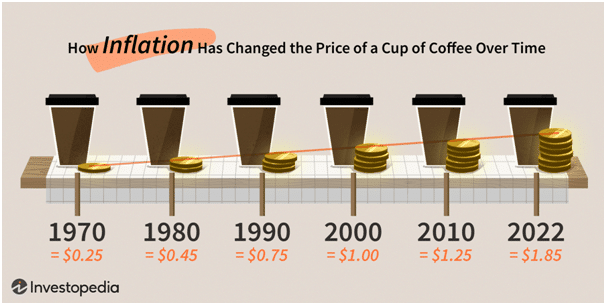Why inflation is down, but not (all) prices
Context: The headline retail inflation rate fell to a 25-month low in May and the wholesale price index (WPI) is now deep in the red, but groceries and household items continue to appear expensive to most Indians. Why?
- While some of the decline in year-on-year inflation rates is statistical, prices of cereals, milk, spices, prepared meals, snacks, and sweets, as well as the costs of education, personal care items, and household goods and services continue to pinch consumers’ pockets.
- While a high base effect (the impact of the corresponding base, or period of the previous year on current growth estimates) has helped ease the headline number (which has been on a downward trajectory for the last four months and fell below 5% in April and May), the inflation rate for some household items continues to be sticky. Core inflation — the non-food, non-fuel segment — will likely stay around 5% in the near term.
- A high base also helped in a sharp decline in the WPI-linked inflation rate, which is expected to pass through to retail inflation with a lag.
- Data released last week showed wholesale inflation at a seven-and-a-half-year low of (-)3.48% in May on the back of a high base effect, easing global commodity prices, food, fuel, primarily articles, and manufactured items.
- The wholesale inflation rate was in double digits during April-September 2022, and reached 16.63% in May 2022.
Which items have displayed high inflation rates?
- In the ‘food and beverages’ category, which carries a weight of 54.18% in the Consumer Price Index (Combined), ‘cereals and products’ have remained in double digits since September 2022 (when it recorded a 11.53% inflation rate), peaking to 15.27% in March 2023. ‘Cereals and products’, which has a weight of 12.35% in the CPI, saw the inflation rate fall to 13.67% in April and 12.65% in May.
- The ‘milk and products’ category too has seen an inflation rate of more than 7% since September 2022, peaking at 9.65% this February. The inflation rate for this category (with a weight of 7.72% in the CPI) eased to 8.85% in April, but rose to 8.91% in May.
- Inflation rate has been sticky in ‘spices’ and ‘prepared meals, snacks, sweets’ as well. Over the last one year, barring May 2022, the inflation rate for spices (weight of 3.11%) has remained in double digits, peaking to 21.09% in January this year. In May, it was recorded at 17.9%.
- Prepared meals, snacks, sweets too have recorded a 6%-plus inflation rate in the last one year.
- Among non-food items, the inflation rate for household goods and services, although easing to 6.05% in May from 6.46% in April and 7% in March, has remained above 6% for the last one year.
- Education, which has a weight of 3.46% in the index, has seen inflation above 5% since July 2022. The inflation rate in the ‘personal care and effects’ category has been rising steadily, with the latest print for May at 9.2% from 9% in April.
Where has inflation recorded a downward trend?
- The ‘meat and fish’ category has been in the deflationary zone for the last three months, with (-)1.29% in May, (-)1.23% in April, and (-)1.42% in March. The gains in inflation have come mainly due to a high base of 6.97% in April 2022 and 8.23% in May 2022.
- The ‘oils and fats’ category, which has a weight of 4.21% in the CPI, has recorded a sharp decline in inflation, remaining in negative territory for the last four months. The inflation rate was (-)16.01% in May and (-)12.03% in April, compared with 13.26% in May 2022 and 17.28% in April 2022. In index terms, the category has seen a sharp decline to 170 in May and 174.9 in April from 202.4 and 199.5 in the corresponding months last year.
- A high base has also helped ease inflation for fruits and vegetables. Though vegetables saw a month-on-month increase of 3.34% in May, it has remained in the negative zone for the last seven months on a year-on-year basis. The inflation rate for vegetables was in double digits during April-September 2022, and entered negative territory thereafter.
What kinds of inflation risks lie ahead?
- While the headline inflation number is expected to remain below 5% in the near term, after the release of inflation data for May, most economists said they expected the inflation rate to rise marginally in June 2023, the data for which will be released on July 12.
- Concerns remain over the potential impact of a poor monsoon on food inflation in the second half of this fiscal. “The development of El Nino conditions would be closely monitored as these could lead to a sub-par monsoon and impact kharif yields and rabi sowing, and thereby impact crop output and food inflation. The headline CPI inflation may rise mildly to 4.5-4.7% in June 2023 from 4.3% in May 2023, based on the early uptrend in the prices of most of the food items, barring edible oils.
| Practice Question
1. What is skewflation? How it is different from normal inflation? |




